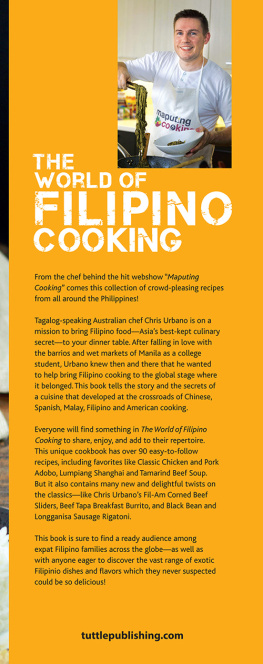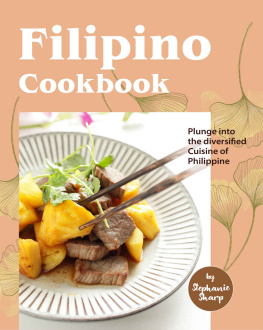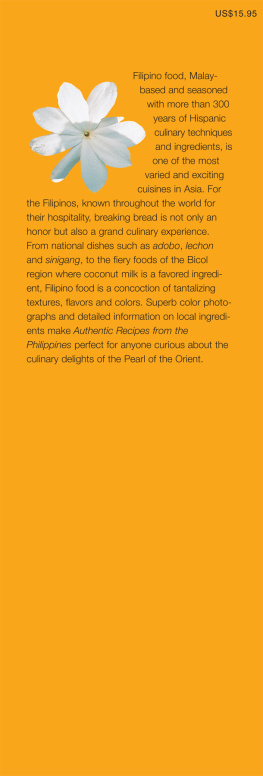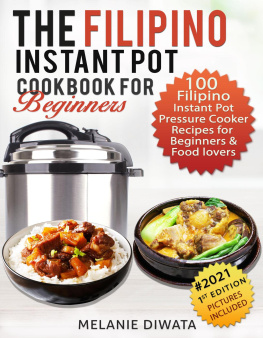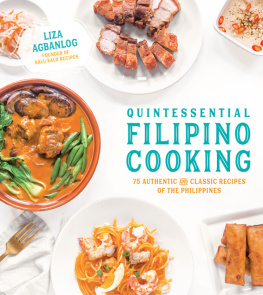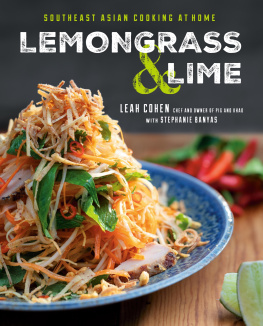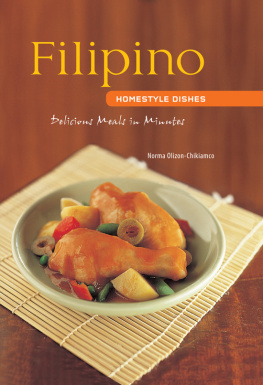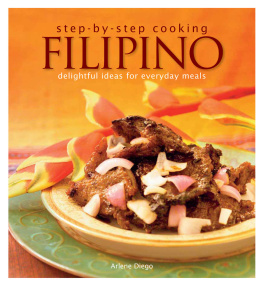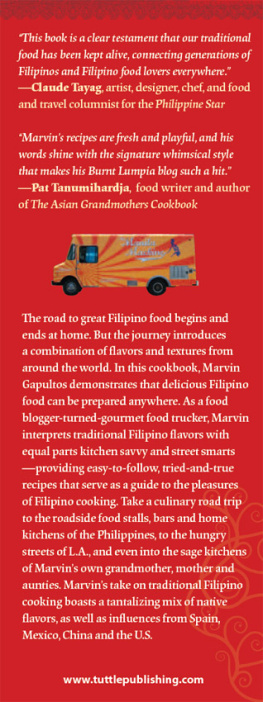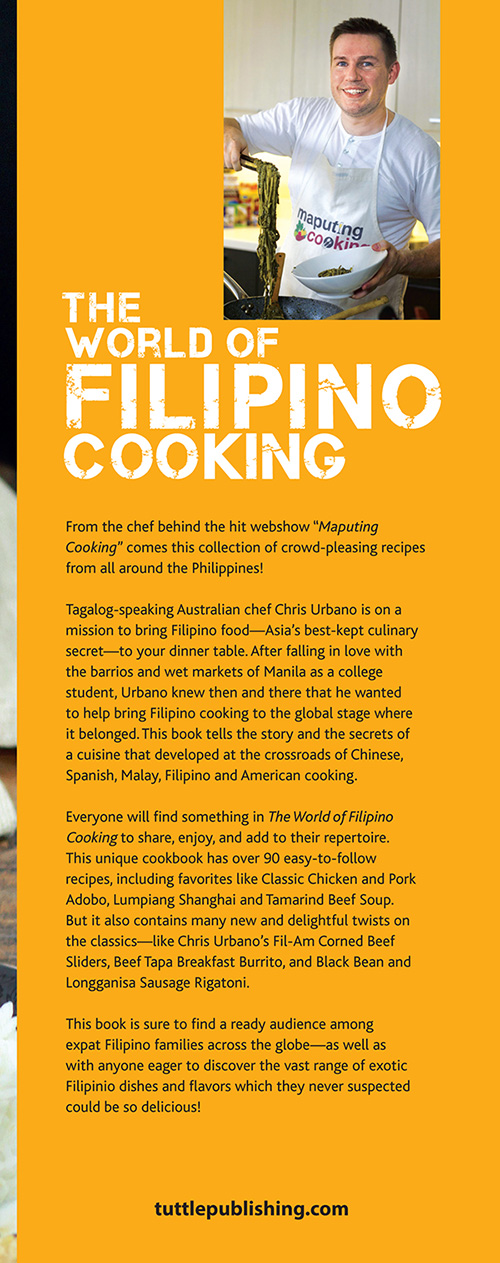
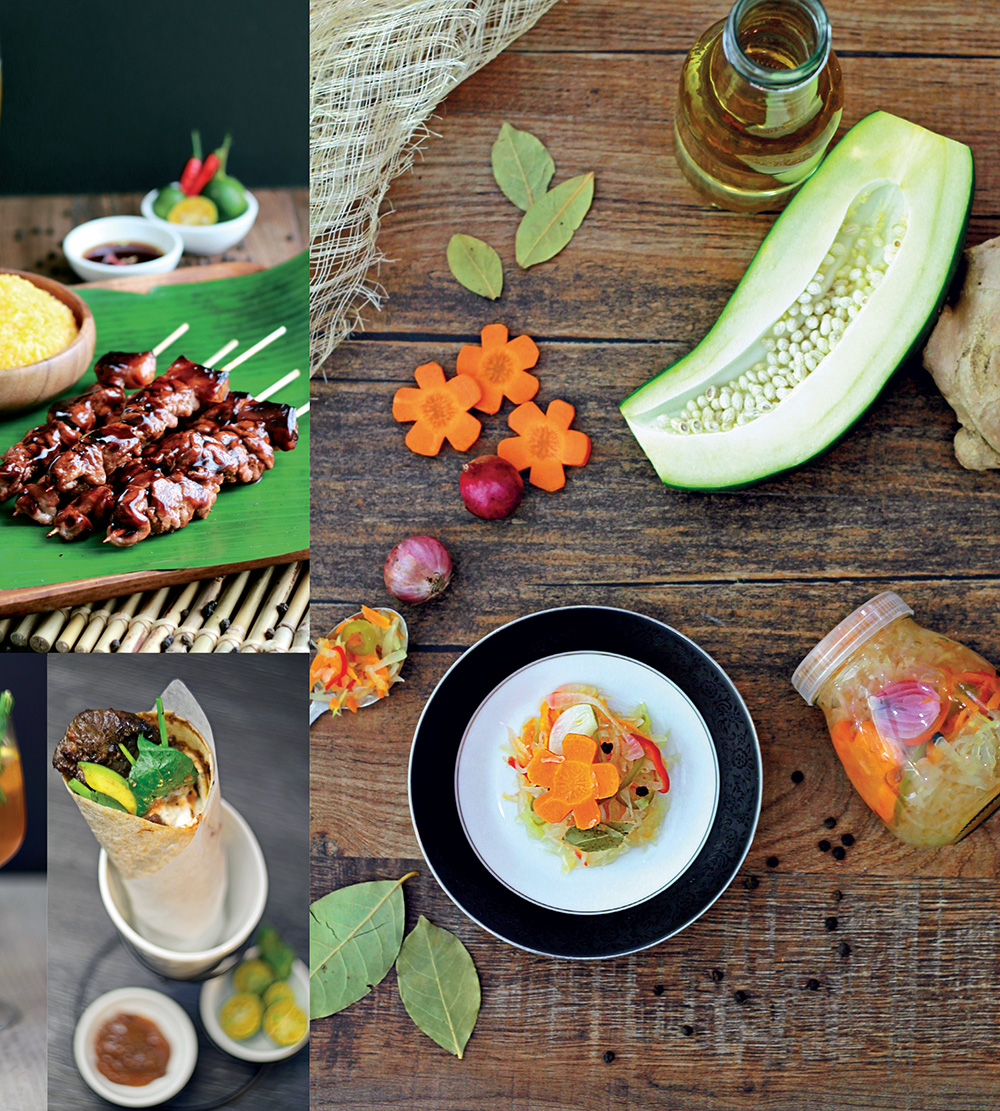
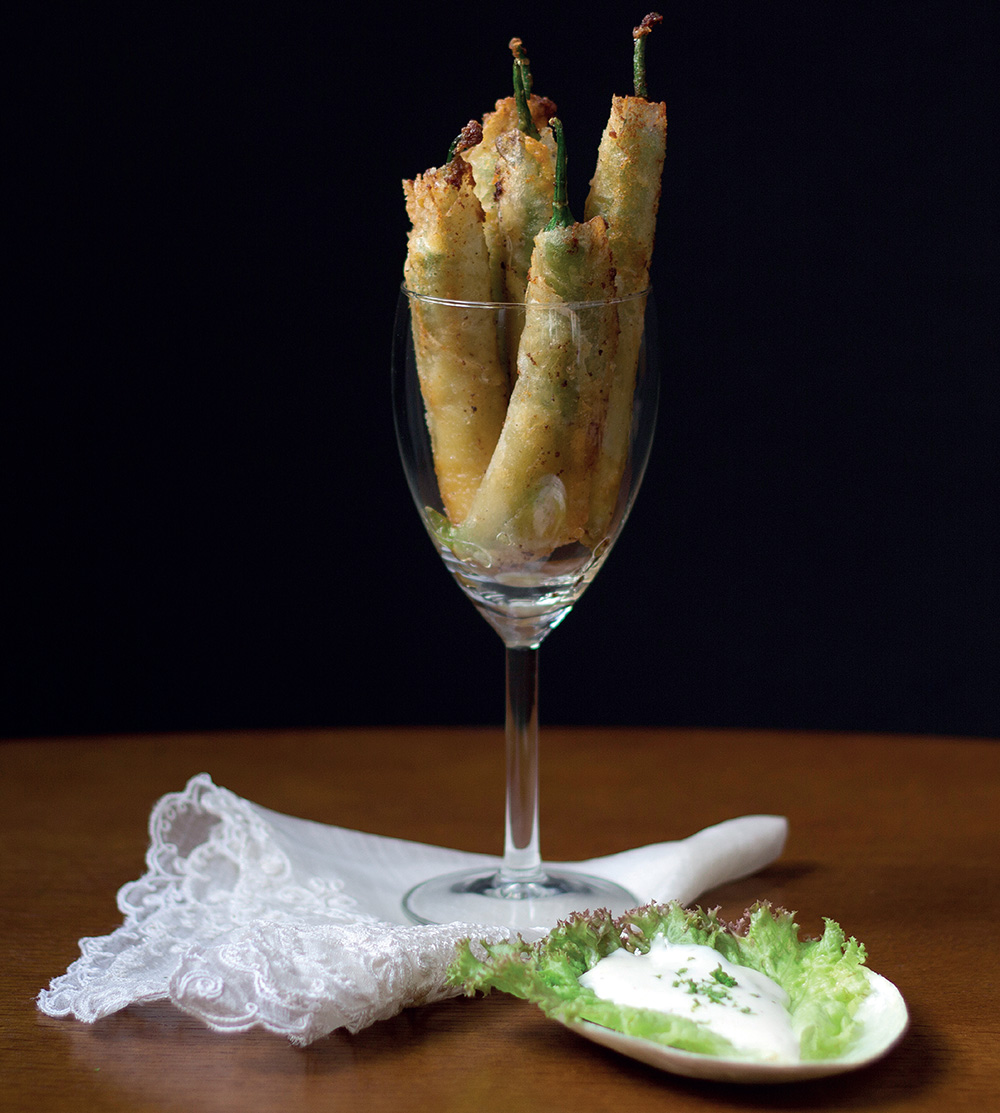
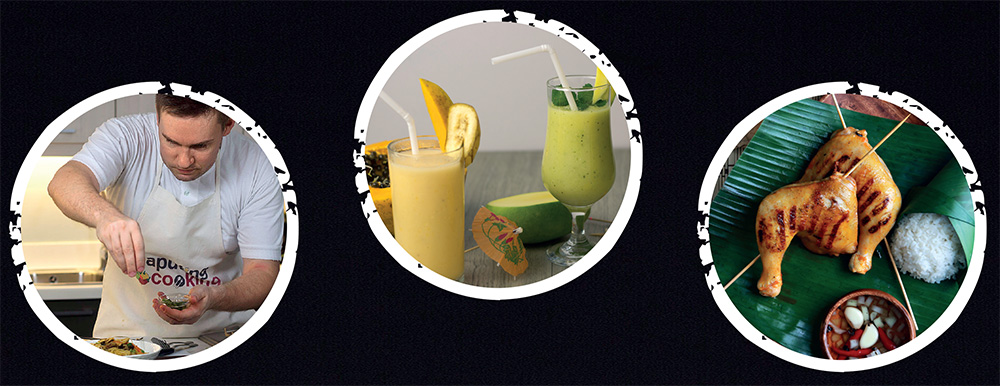
THE WORLD OF FILIPINO COOKING
Food and Fun in the Philippines
By Chris Urbano of Maputing Cooking
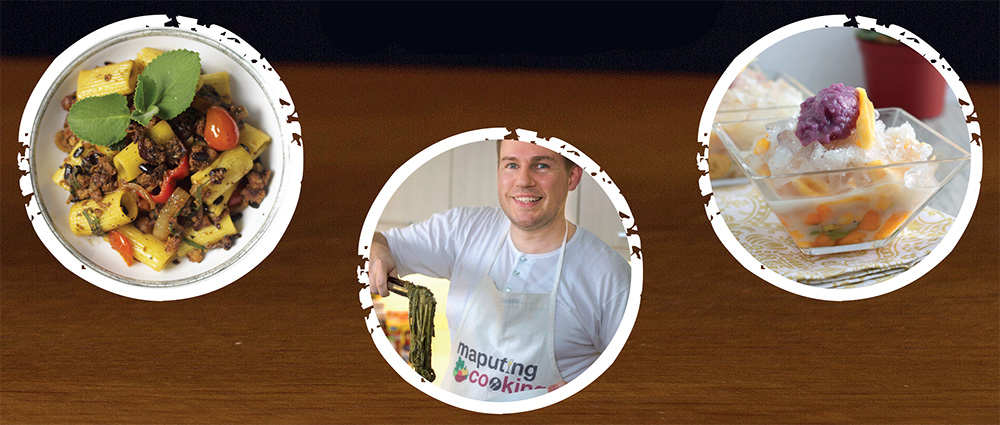
Filipino Food Goes Global
M uch has been written on the imminent arrival of Filipino food on the world stageits a cuisine that has not so far enjoyed the global fame and adoption of others, despite a growing awareness and advocacy around the world through one of the worlds largest and most active diasporas. And until now, it remains largely off the radar of foodies around the world. It has been said that Filipino food is misunderstood, that it is bland, lacking complexity or repulsive for weird ingredients and frankenfoods: like duck embryos, coagulated pigs blood or chicken intestines on a stick. But having traveled and dined widely across Southeast Asia, Ive discovered that while certainly misunderstood, this is a cuisine that is well ahead of the times. Through twists of history the Filipino cuisine has been influenced by almost every major global culinary tradition, and has remarkably integrated and innovated on these and made them its ownand yes, its time is coming.
Growing up in suburban Australia, the idea of going to a Filipino restaurant or takeout waseven till todaynot common. So it has been to my great surprise to find myself now living in Manila as a chef specializing in Filipino culinary arts; and one of the pioneers of a global Filipino Food Movement that is underway, through my online cooking program and blog Maputing Cooking (literally meaning a white foreigner cooking).
Filipinos often leave comments on my videos that they feel so proud to see a foreigner truly knowing and appreciating their food, many are in fact surprised that a foreigner can be so in love with their cuisine, or believes their cuisine to be world class. Just as the grass appears greener on the other side of the fence, for Filipinos growing up eating this cuisine daily, its easy to underestimate the culinary value it represents. Maputing Cooking has proven popular through portraying the food in a new light, through fresh eyes experiencing Filipino food for the first time. This book is an account of my discovery and interpretations of Filipino foodtold through the eyes of a foreign-noy, or foreigner with the heart of a Filipino.
Food and culture go hand in hand. When I first arrived in Manila over a decade ago to study wikang Filipino (Filipino language), Philippine history and politics I found that it was through sharing a meal with the Filipinos that I got the clearest insight into the Filipino culture and society. As a passionate home chef and foodie myself, food and cooking was a perfect reason to explore the Philippines, connect with the people, and learn the language. I spent my time in the traditional wet markets of Quezon or Mandaluyong cities, chatting with the market vendors who are only too happy to chat with a foreigner whos so fascinated with their food. Indeed it was from these conversations that I picked up my first Filipino recipes, and I would practice cooking them at home after buying my ingredients from these same people.
As time went by and my knowledge of the language and history of the Philippines increased, I started to see the imprint of historical events on Filipino food and how it took shape over the centuries. From the Austronesian migration across the region to the spread of religion, culture and trade from China, India and the Malay peninsula; from the Spanish colonial period, to the American administration in the 20th century: the fingerprints of history are found everywhere in Filipino food.
The very reason Filipino food can be hard to understand, or is known for powerful and sometimes strange food juxtapositions is that it is the product of an equally complex history, and myriad of cultural influences. In todays culinary landscape, fusion is a word used to describe a multicultural combination of dishes from different parts of the world. Its East Asian meets Southeast Asian, or Asian meets Western cuisine, a clash of tastes and cultures. Its the future of food. But in the Philippines, this fusion happened gradually over the past centuries, forming a melting pot of indigenous, Malay, Chinese, Spanish and American cooking. And this is probably the best way to describe what Filipino food is today. Most Filipino recipes today are inherently fusion with two or more culinary traditions clearly evident. Through the vicissitudes and accidents of history, Filipino food may well be known as the first true global fusion cuisineahead of its time indeed.
And this was how I became hookedevery dish a fascinating insight into the past. This is the country that matches Spanish leche flan with tropical yams; Mexican chocolate rice with dried fish; Chinese black beans with pineapples; Malay style coconut curries with taro leaves; American hotdogs with spaghetti. While some dishes appear truly unusual, Filipino chefs have created harmonies between the taste sensations of sweet, salty, sour, bitter and savory with remarkable consistency. For example in the Filipino Nilagang Baka or boiled beef soup, one will find a remarkably diverse set of ingredients: beef, banana, native limes and fish sauce in a single perfectly balanced meal.
After a fascinating year of discovery in my college days I returned to Australia to complete my studies and started a career in business. But my passion for Filipino food and cooking never faded and in 2014 I returned to Manila on a permanent basis to start my own business in the food and beverage industry. And due to my passion for the cuisine, I set a goal to help culinary arts both locally and internationallystarting with my Maputing Cooking Youtube videos and blog.
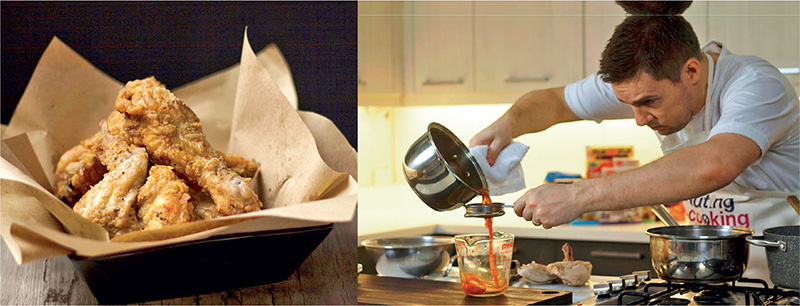
Fried chicken was popularized only after the Americans introduced deep frying; while Chicken Sotanghon is colored with annatto seeds brought by the Mexico Galleon trade.
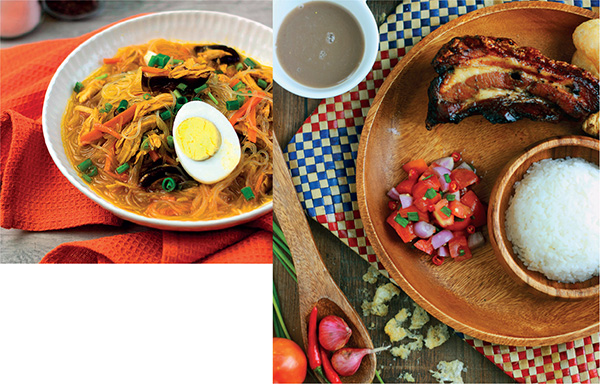
Filipino food uses a wide range of cooking techniques, and comes in an equally wide range of forms.
With the support and well wishes of Filipinos worldwide, Ive been privileged to present Filipino food to a global audience directly through the show, local and international media appearances, as a representative for food and culinary brands in the Philippines, and as a culinary ambassador from the Philippines to countries abroad, including my native country Australia.
As one of the few Tagalog speaking foreigners based in Manila, Im a proud foreign-noy and glad to be a part of the movement that is showcasing this remarkable culinary legacy to the world. Whether youre a Filipino kababayan, or a foreigner keen to discover the unique flavors of Filipino cooking, I trust youll find this bookseen through the eyes of a
Next page
